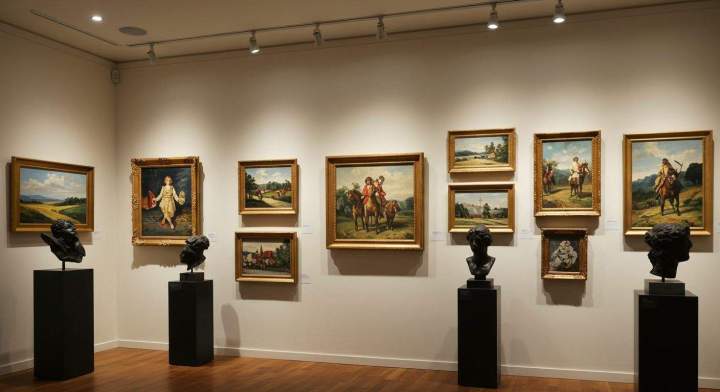Investing In Art: Top Trends For Paintings And Sculptures
Sculptures Admin / July 23, 2025

The Rise of Emerging Artists
Fresh Perspectives and Unique Styles
In recent years, there has been a noticeable shift toward investing in emerging artists. Collectors are increasingly drawn to the authenticity and innovation that these artists bring to the table. Many of these creators are redefining traditional forms—both in paintings and sculptures—employing unconventional techniques and materials to express contemporary themes.
Accessibility and Affordability
Investing in lesser-known artists often offers more accessible price points compared to established names. This trend has democratized the art market, allowing new collectors to enter without the high financial barriers typically associated with renowned artists. As these emerging talents gain recognition, their works often appreciate significantly, making early investments particularly lucrative.
The Impact of Digital Art
NFTs and the Virtual Revolution
Digital art has exploded onto the scene, particularly with the advent of Non-Fungible Tokens (NFTs). These blockchain-based assets have transformed the way art is owned and traded, allowing digital creations to gain collectible status. This trend has attracted a younger generation of collectors eager to invest in virtual assets that can appreciate in value over time.
Blending Traditional and Digital
Moreover, many traditional artists are now incorporating digital mediums into their work, creating hybrid pieces that challenge the boundaries of art forms. This fusion not only expands the potential audience but also introduces fresh investment opportunities as collectors look for innovative methods of expression.
Sustainability in Art
Eco-Conscious Materials
Sustainability has become a significant consideration for many artists and collectors alike. There is a growing trend toward artworks made from eco-friendly materials, which resonate with environmentally conscious buyers. Collectors are increasingly prioritizing works that reflect their values, making investments that align with their commitment to sustainability.
Social Responsibility and Themes
Artworks that engage with themes of social justice, climate change, and community resilience are also gaining traction. Investors are recognizing the potential for art to drive social change, and many are keen to support artists whose work reflects these pressing global issues.
Market Dynamics
Auction Houses and Online Platforms
The art market has seen a significant shift toward online platforms, particularly since the pandemic. Traditional auction houses have adapted by providing virtual bidding options, while new online marketplaces have emerged, making art more accessible than ever. This shift has broadened the audience for investing in art, allowing collectors from around the world to participate in the market.
Globalization of the Art Market
The globalization of the art scene has led to the rise of diverse artistic voices. Emerging markets in Asia, Africa, and Latin America are gaining prominence as collectors seek to diversify their portfolios with international artists. This trend is fostering cross-cultural exchanges and expanding opportunities for investment.
The Role of Art Advisors
Expert Guidance
For those new to art investment, working with an art advisor can be invaluable. These professionals provide insights into market trends, help identify promising artists, and assist with valuations. They can offer tailored advice according to individual investment goals, making the process less daunting for novices.
Building a Diverse Collection
An art advisor can also help investors build a diverse collection that reflects their aesthetic preferences while optimizing potential returns. By curating a balanced portfolio of established and emerging artists, collectors can mitigate risks while capitalizing on opportunities.
Art investment requires careful analysis of market trends, artist trajectories, and long-term value potential to maximize returns. Consult with a certified art investment advisor to develop a portfolio strategy that aligns with your financial goals and aesthetic preferences.